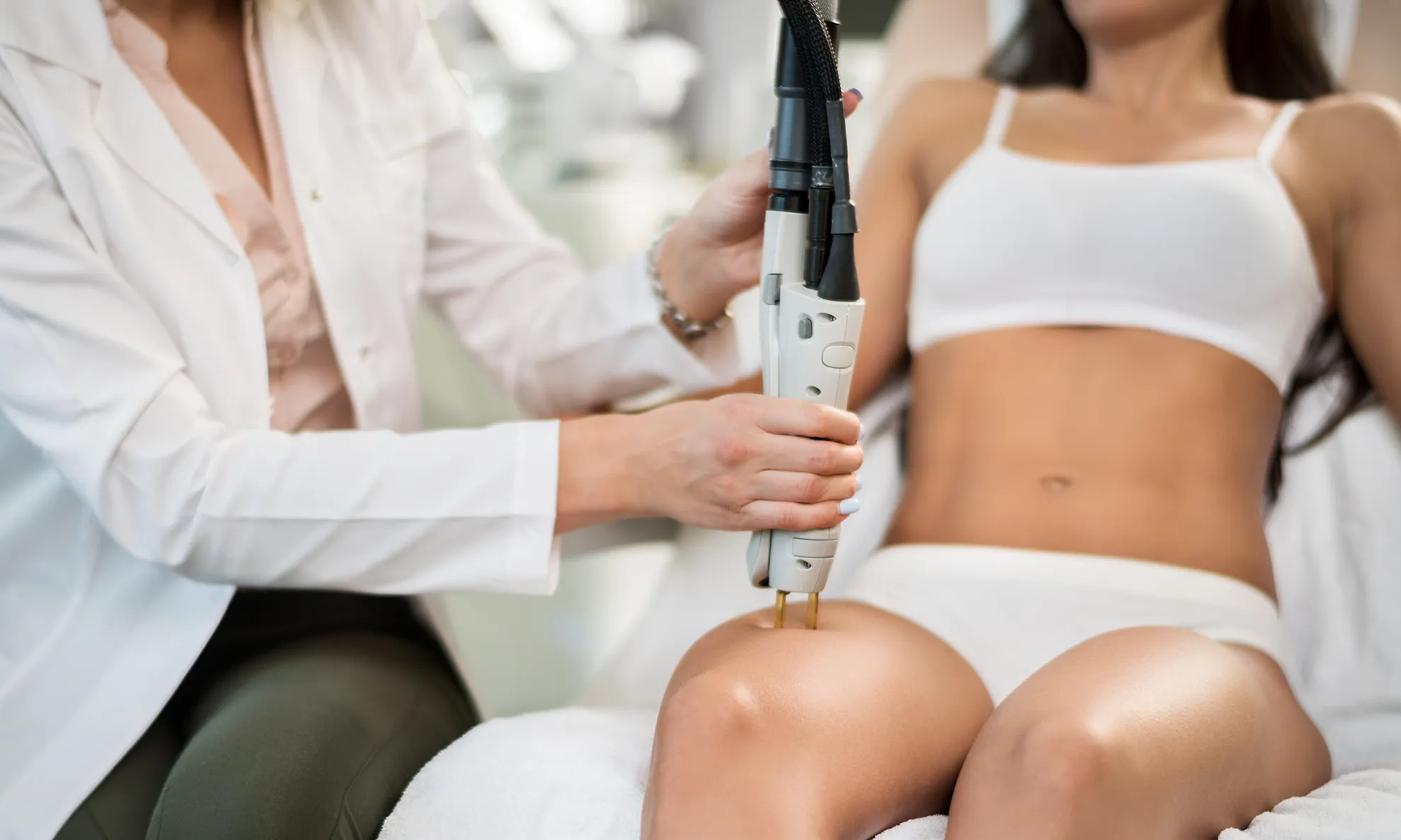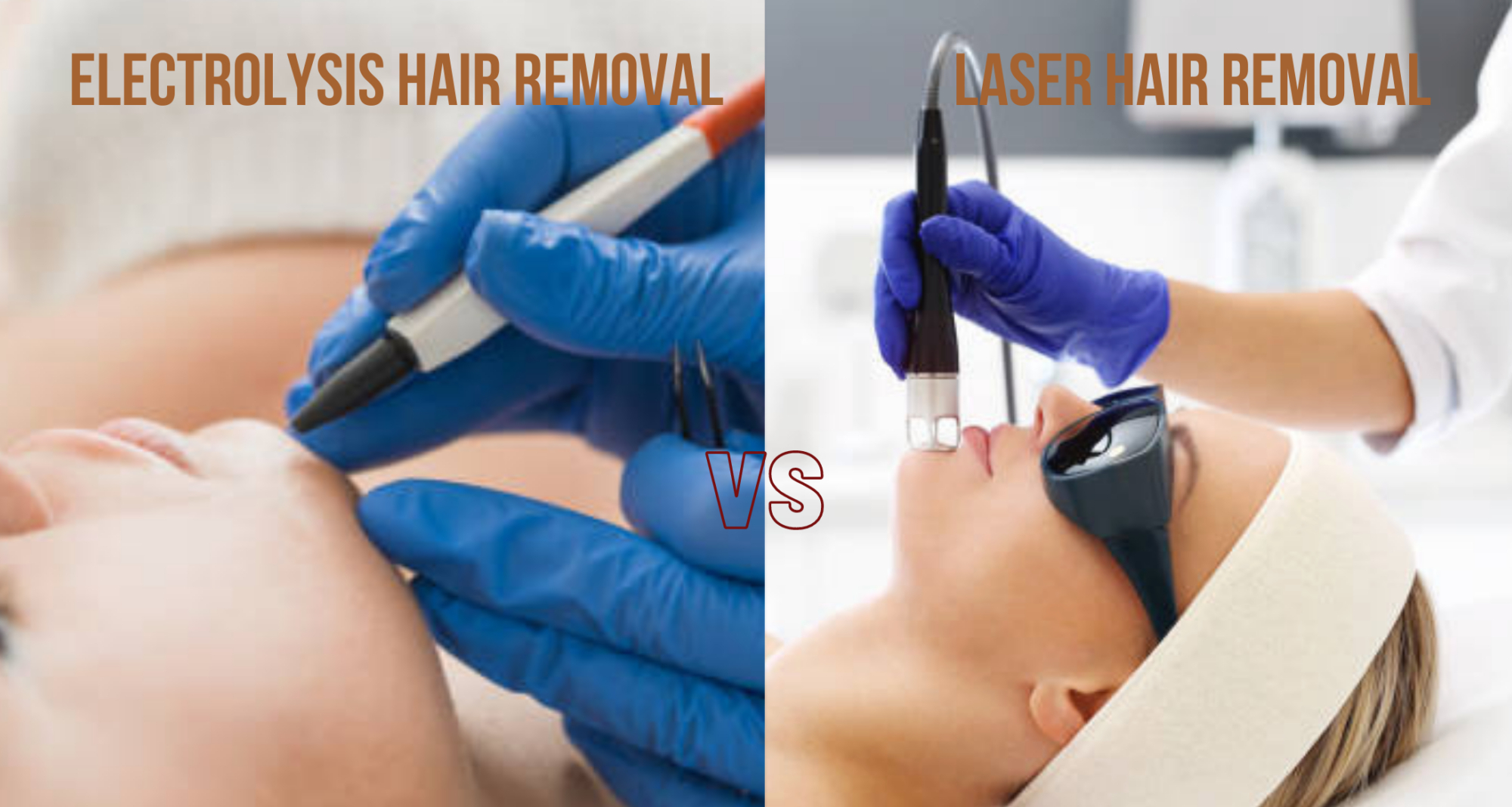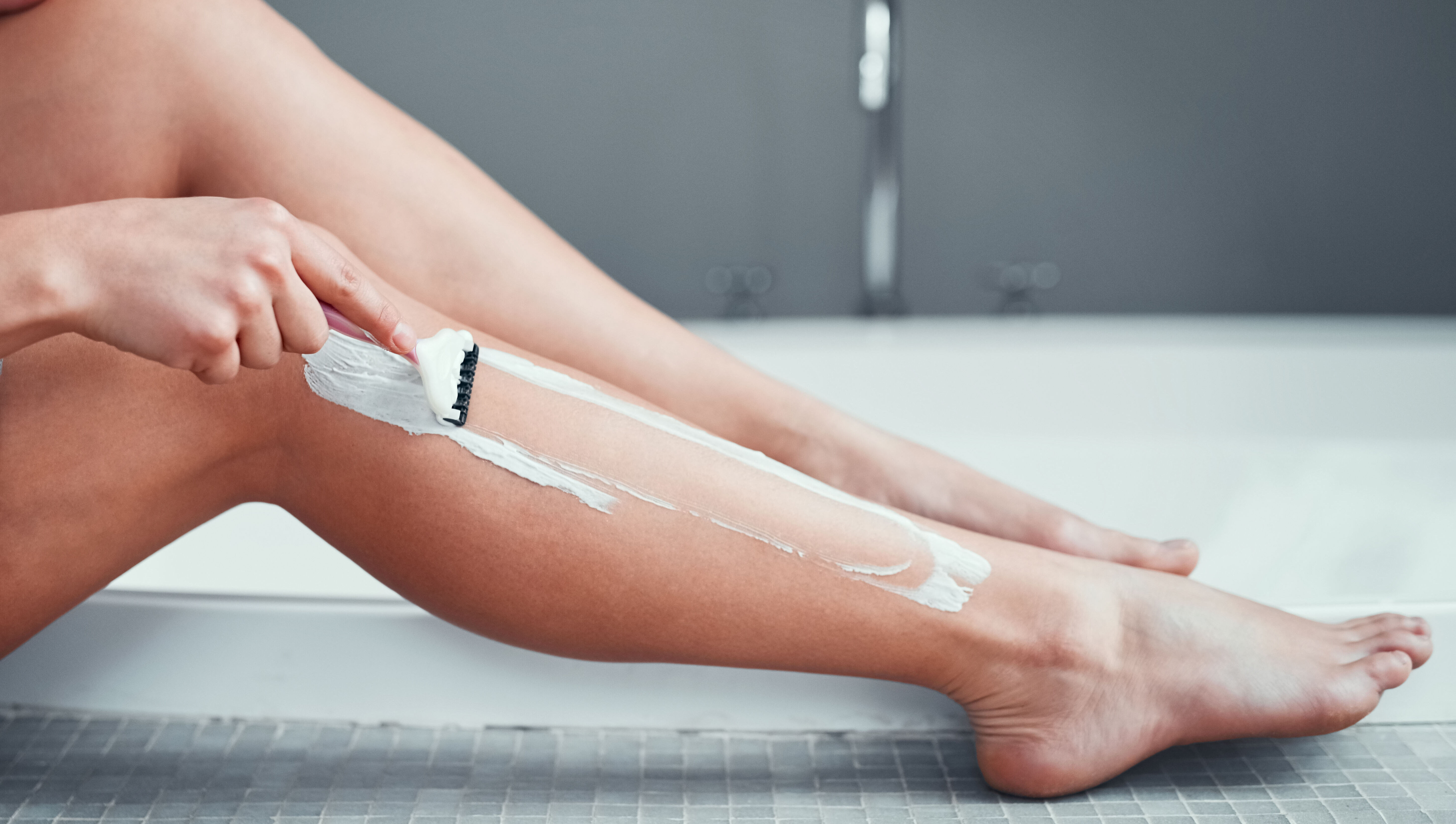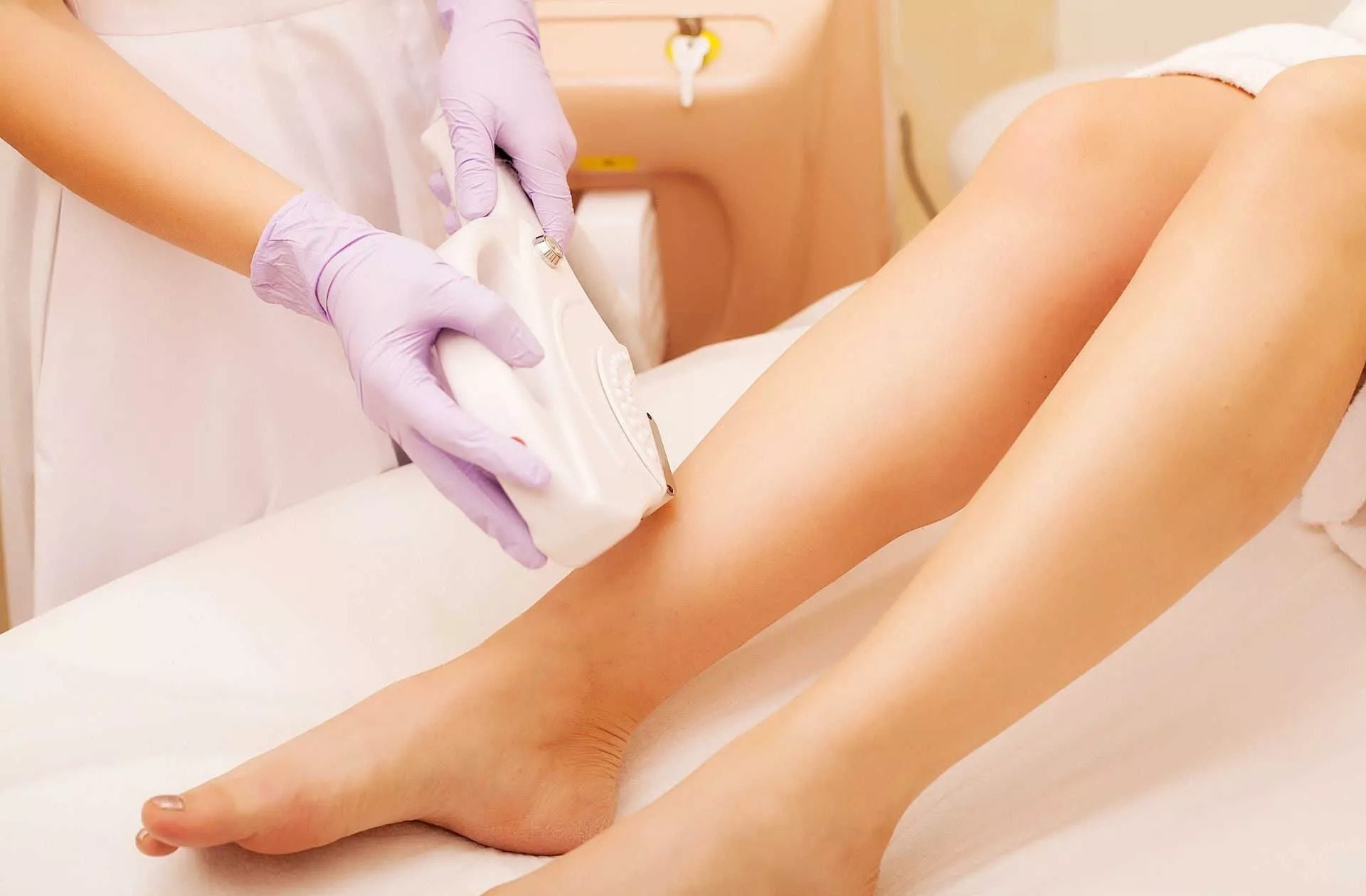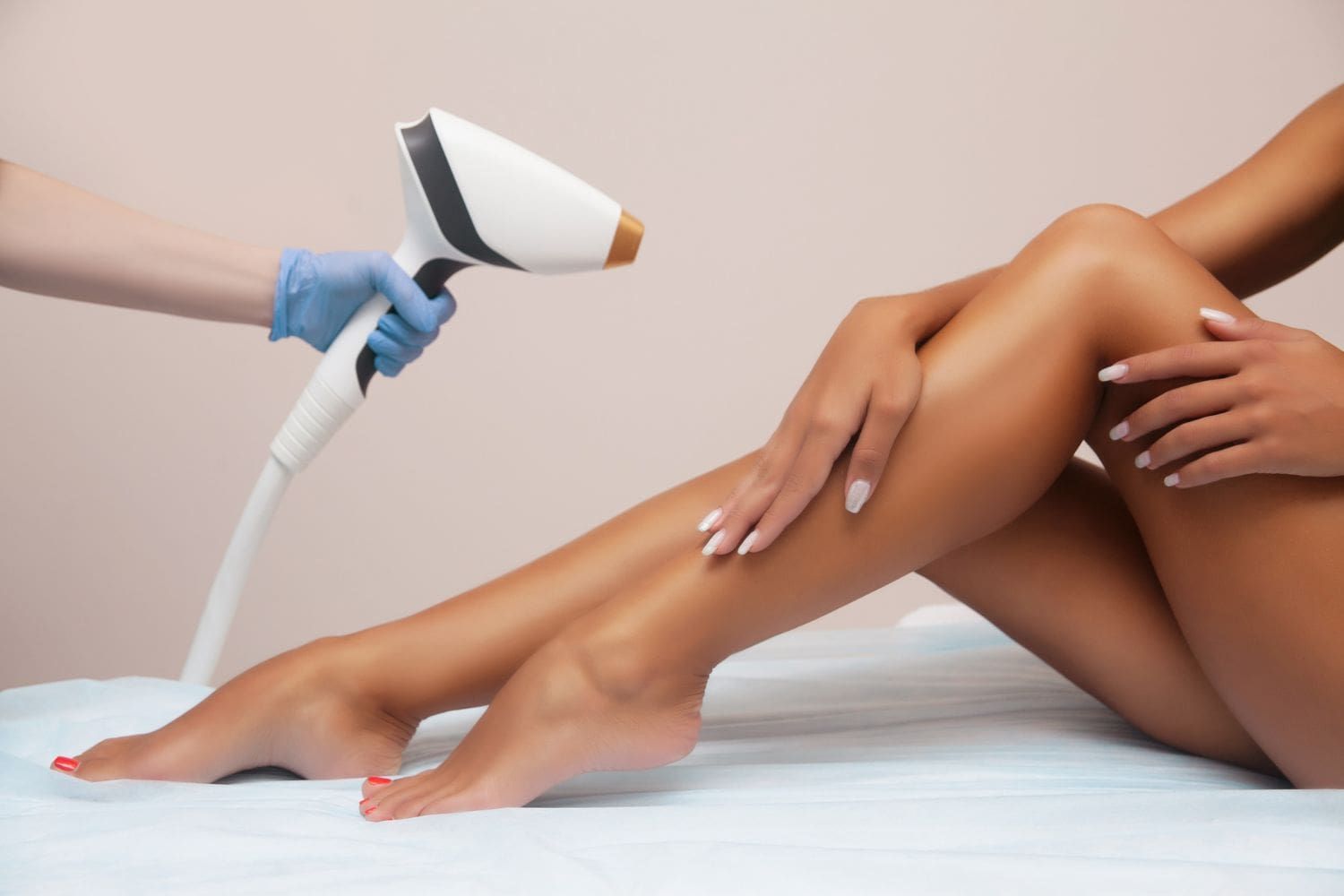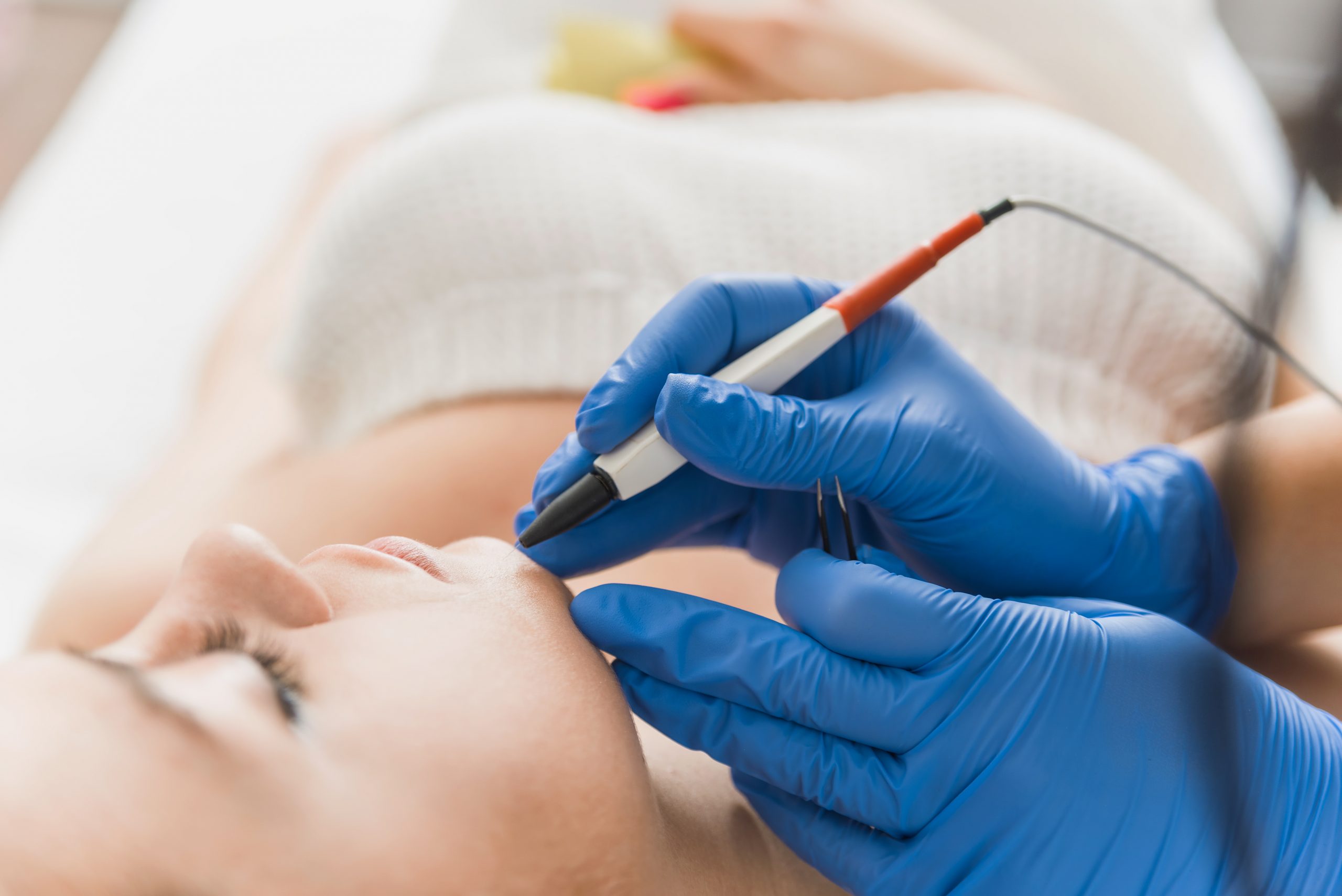Home>How-to Guides>For Women>How Does Electrolysis Hair Removal Work
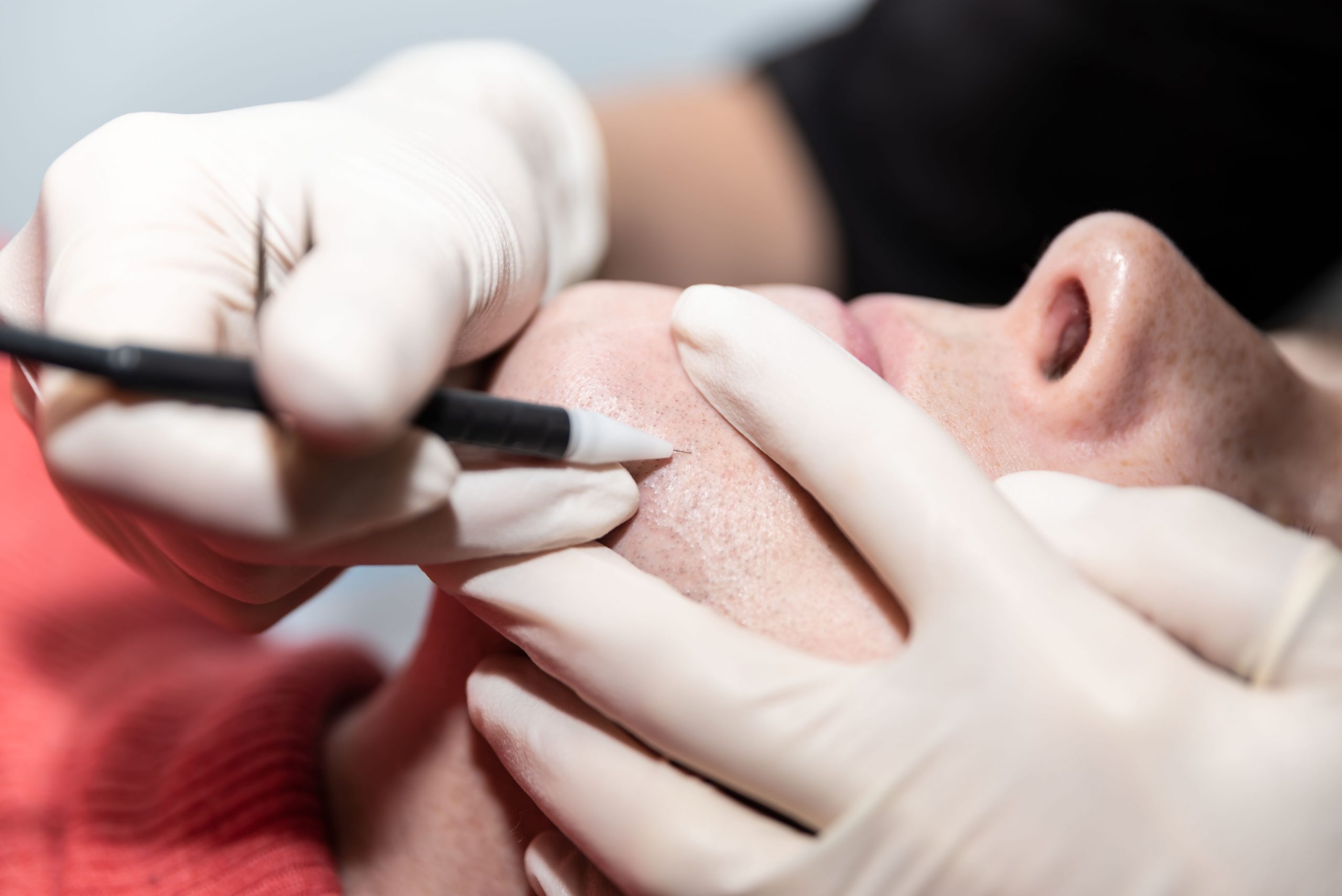

For Women
How Does Electrolysis Hair Removal Work
Modified: September 23, 2023
Discover how electrolysis hair removal works for women. Say goodbye to unwanted hair with this effective and permanent solution.
(Many of the links in this article redirect to a specific reviewed product. Your purchase of these products through affiliate links helps to generate commission for Under-tec.com, at no extra cost. Learn more)
Table of Contents
- Introduction
- Understanding Electrolysis Hair Removal
- The Process of Electrolysis Hair Removal
- Types of Electrolysis
- Benefits and Drawbacks of Electrolysis Hair Removal
- Preparing for Electrolysis Hair Removal
- What to Expect during Electrolysis Hair Removal
- Aftercare Tips for Electrolysis Hair Removal
- Frequently Asked Questions
- Conclusion
Introduction
Welcome to the world of electrolysis hair removal! If you’re tired of waxing, shaving, or using depilatory creams to get rid of unwanted hair, then electrolysis might be the solution you’ve been looking for. Electrolysis is a safe and effective method of permanently removing hair from the body, offering a long-lasting solution for both men and women.
Unwanted hair can be a source of frustration, especially in visible areas such as the face, underarms, bikini line, or legs. It can affect your self-confidence and impact your daily routine as you continuously battle to keep it at bay. This is where electrolysis comes in, providing a permanent solution to your hair removal woes.
Whether you have light hair, dark hair, or even white or gray hair, electrolysis can work for you. Unlike other hair removal methods that merely target the hair shaft, electrolysis involves the precise insertion of a fine probe into the hair follicle. By delivering a small amount of electrical current to the root of the hair, it effectively destroys the follicle and inhibits future hair growth.
In this article, we will dive deep into the world of electrolysis hair removal, exploring the process, different types, benefits, drawbacks, preparation, what to expect during the procedure, aftercare tips, and answers to some commonly asked questions. So, let’s get started on your journey to smooth, hair-free skin!
Understanding Electrolysis Hair Removal
Before delving into the process of electrolysis hair removal, it’s important to understand how it works and why it is considered a reliable method for permanent hair removal. Electrolysis has been around for over a century and is approved by the Food and Drug Administration (FDA) as a safe and effective solution for long-term hair removal.
The principle behind electrolysis is based on the concept of electrical current. A trained electrologist will use a tiny, sterile probe to insert it into an individual hair follicle. This probe delivers a low-level electrical current to the root of the hair, damaging the follicle and preventing any further hair growth.
Unlike other hair removal methods that only target the hair above the skin’s surface, such as waxing or shaving, electrolysis gets to the root of the problem, literally. It works on all types of hair, regardless of color, thickness, or location on the body. This makes it a versatile option for people with varying hair characteristics.
Before undergoing electrolysis, it is essential to consult with a certified electrologist who will assess your hair type, skin sensitivity, and overall suitability for the treatment. They will explain the process and answer any questions or concerns you may have.
In the next section, we will take a closer look at the process of electrolysis hair removal and the different techniques used to achieve lasting results.
The Process of Electrolysis Hair Removal
Electrolysis hair removal involves a series of steps to ensure effective and permanent hair removal. The process is typically performed by a trained electrologist and may vary slightly depending on the specific technique used. Let’s explore the common steps involved in electrolysis:
- Consultation: Prior to the treatment, you will have a consultation with the electrologist. This is an opportunity to discuss your hair removal goals, medical history, and any concerns you may have. The electrologist will also assess your hair type and determine the appropriate technique to use.
- Preparation: The treatment area needs to be clean and free from any lotions, creams, or oil. Some electrologists may ask you to shave the area a day or two before the session to ensure better access to the hair follicles.
- Insertion of Probe: The electrologist will insert a fine, sterile probe into each hair follicle individually. The probe is typically as thin as a hair strand, and it reaches down to the root of the hair follicle.
- Delivery of Electrical Current: Once the probe is inserted, the electrologist will deliver a low-level electrical current into the hair follicle. The current is adjusted to target the specific hair follicle and destroy it without causing damage to the surrounding skin.
- Removal of Hair: After the electrical current is applied, the electrologist will gently remove the hair using tweezers or a similar tool. The hair should come out easily since the follicle has been effectively treated.
- Repeat Process: The process is repeated for each hair follicle in the treatment area. Depending on the size of the area and the density of the hair, multiple sessions may be required to achieve full results. Electrolysis is a gradual process, with hair becoming finer and less noticeable with each session.
- Post-Treatment Care: After the session, the electrologist will provide you with instructions for post-treatment care. This may include avoiding sun exposure, applying soothing creams, and refraining from any harsh hair removal methods for a specified period.
It’s important to note that the duration of each session and the number of sessions required will vary depending on factors such as the size of the treatment area, hair density, and individual response to the treatment. Your electrologist will guide you through the process and create a personalized treatment plan tailored to your specific needs.
In the following section, we will explore the different types of electrolysis techniques used in hair removal.
Types of Electrolysis
Electrolysis hair removal offers different techniques that can be tailored to individual needs and preferences. While the underlying principle of delivering electrical current to the hair follicle remains the same, the methods of application may vary. Here are the three main types of electrolysis:
- Galvanic Electrolysis: Galvanic electrolysis, also known as the direct current method, involves passing a direct current through the hair follicle to create a chemical reaction. This process produces a chemical called lye, which destroys the hair follicle. Galvanic electrolysis is effective in targeting individual hair follicles and is especially useful for treating thick and coarse hair.
- Thermolysis Electrolysis: Thermolysis, also known as the high-frequency method or short-wave electrolysis, employs high-frequency alternating current. The probe used in thermolysis heats up, generating heat within the hair follicle. This heat destroys the cells responsible for hair growth, leading to permanent hair removal. Thermolysis is quicker than galvanic electrolysis and is commonly used for treating fine and light-colored hair.
- Blend Electrolysis: Blend electrolysis is a combination of galvanic and thermolysis techniques. It delivers both direct current and high-frequency current simultaneously. This method combines the benefits of both galvanic and thermolysis, making it effective for a wide range of hair types. The blend electrolysis technique is often used in cases where both thick and fine hair are present in the treatment area.
The choice of electrolysis technique depends on various factors, including the type of hair being treated, the size of the treatment area, and the individual’s pain tolerance. A skilled electrologist will assess these factors and recommend the most suitable technique for optimal results.
It’s essential to note that electrolysis should always be performed by a trained and certified professional. Choosing a reputable practitioner will ensure a safe and successful treatment experience.
Now that we have explored the types of electrolysis techniques, let’s examine the benefits and drawbacks of electrolysis hair removal in the next section.
Benefits and Drawbacks of Electrolysis Hair Removal
Electrolysis hair removal offers several benefits that make it an appealing choice for those seeking a permanent solution to unwanted hair. However, like any hair removal method, electrolysis also has its drawbacks. Let’s explore the advantages and disadvantages of electrolysis:
Benefits:
- Permanent Results: One of the most significant advantages of electrolysis is its ability to provide permanent hair removal. By targeting the hair follicles and destroying them, electrolysis inhibits future hair growth in the treated areas.
- Effective for All Hair Types and Colors: Unlike other hair removal methods, such as laser hair removal, electrolysis is suitable for all hair types and colors. It can effectively treat light, dark, coarse, thin, and even white or gray hair.
- Precision and Customization: Electrolysis allows for precise and targeted treatment. Each hair follicle is treated individually, ensuring thorough removal and preventing regrowth.
- No Regrowth Period: Unlike other methods like waxing or shaving, electrolysis does not require a waiting period for hair regrowth before each treatment. The procedure can be performed with minimal hair length, making it convenient for maintaining smooth skin throughout the treatment process.
- Safe and Approved: Electrolysis is considered a safe procedure when performed by a qualified professional. It has been approved by the FDA as a reliable method for permanent hair removal.
Drawbacks:
- Time and Multiple Sessions: Electrolysis is a gradual process that requires multiple sessions to achieve permanent results. The number of sessions needed varies depending on factors like hair density, treatment area, and individual response. Each session can last from a few minutes to an hour or more.
- Discomfort and Sensitivity: Some people may experience mild discomfort during the electrolysis procedure. The level of discomfort can vary depending on individual pain tolerance and the sensitivity of the treatment area. However, topical numbing creams can be applied to minimize discomfort.
- Cost: Electrolysis can be more expensive compared to other hair removal methods, such as waxing or shaving. The cost varies depending on factors such as the size of the treatment area and the number of sessions required. However, it is important to consider the long-term benefits of permanent hair removal when considering the cost.
- Time Commitment: Due to the nature of electrolysis requiring multiple sessions, it requires a time commitment. Individuals must be dedicated and consistent with their appointments to achieve the desired results.
It’s important to weigh the benefits against the drawbacks and consider your individual needs and preferences when deciding if electrolysis is the right hair removal method for you. Consulting with a certified electrologist can provide more insight into the specific advantages and limitations based on your unique situation.
In the next section, we will discuss how to prepare for electrolysis hair removal to ensure a successful treatment.
Preparing for Electrolysis Hair Removal
Proper preparation is crucial to ensure a successful and effective electrolysis hair removal treatment. Taking the necessary steps beforehand will help optimize the results and minimize any potential discomfort. Here are some tips to prepare for electrolysis:
- Find a reputable electrologist: It’s important to choose a certified and experienced electrologist who specializes in electrolysis. Research and read reviews to ensure you select a reputable practitioner who will provide safe and effective treatment.
- Consultation: Schedule a consultation with the electrologist. During this appointment, you can discuss your hair removal goals, any medical conditions or medications that may affect the treatment, and ask any questions or concerns you may have.
- Avoid sun exposure: Limit your exposure to direct sunlight or tanning beds in the weeks leading up to your electrolysis treatment. Sunburned or tanned skin can be more sensitive, increasing the risk of discomfort during the procedure.
- Let your hair grow slightly: It’s advisable to allow some hair growth in the treatment area before your electrolysis session. The length of hair recommended by your electrologist will depend on the specific technique used and the individual’s hair type.
- Avoid other hair removal methods: Refrain from using hair removal methods such as plucking, waxing, and depilatory creams in the weeks leading up to electrolysis. These methods can interfere with the hair growth cycle, making it more difficult for the electrologist to target the hair follicles effectively.
- Cleanse the treatment area: On the day of your appointment, ensure that the treatment area is clean and free from lotions, creams, or oils. This provides optimal conditions for the electrologist to perform the procedure.
- Prepare mentally and physically: Electrolysis is a time-consuming process, so come prepared with a positive mindset and a willingness to commit to multiple sessions. Consider practicing relaxation techniques to help manage any discomfort during the treatment.
Remember, it’s essential to follow any specific instructions given by your electrologist regarding preparation. They may have additional recommendations based on your individual situation or treatment plan.
Now that you are prepared for your electrolysis treatment, let’s move on to the next section where we will discuss what to expect during the procedure.
What to Expect during Electrolysis Hair Removal
Knowing what to expect during an electrolysis hair removal session can help ease any apprehensions and ensure a smoother treatment experience. While the specifics may vary depending on the individual and the electrologist, here is a general overview of what typically occurs during an electrolysis session:
- Preparation: Before starting the treatment, the electrologist will cleanse the treatment area and ensure that you are comfortable and prepared for the session. They may also reconfirm any specific instructions or concerns discussed during the consultation.
- Insertion of Probe: The electrologist will insert a fine, sterile probe into each hair follicle individually. The sensation experienced during this step can vary from person to person but is generally described as a slight pricking or tingling sensation.
- Delivery of Electrical Current: Once the probe is inserted, the electrologist will deliver a low-level electrical current. You may feel a mild heat or warmth in the treatment area, which is a normal part of the process. The current is carefully adjusted to target the specific hair follicle and destroy it without causing harm to the surrounding skin.
- Removal of Hair: After the electrical current is applied, the electrologist will gently remove the hair using tweezers or a similar tool. The hair should come out easily since the follicle has been effectively treated. You may feel a slight pulling sensation during this step, but it is generally well-tolerated.
- Repeat Process: The process is repeated for each hair follicle in the treatment area. This involves inserting the probe, delivering the electrical current, and removing the hair. The duration of the session will depend on the size of the treatment area and the number of hairs being treated.
- Post-Treatment Care: After the session, the electrologist will provide instructions for post-treatment care. This may include applying soothing creams, avoiding excessive sun exposure, and refraining from any harsh hair removal methods for a specified period.
- Future Sessions: Electrolysis is a progressive treatment that typically requires multiple sessions to achieve desired results. Your electrologist will discuss the recommended frequency of sessions and create a treatment plan tailored to your unique needs.
It’s important to communicate with your electrologist during the session if you experience any discomfort or have any concerns. They can make adjustments to ensure your comfort and address any questions you may have about the process.
Always remember that electrolysis is a gradual process, and results may not be immediate. With each session, you will notice a reduction in hair growth, leading to smoother and hair-free skin over time.
Now that you know what to expect during the electrolysis procedure, let’s move on to the next section where we will discuss important aftercare tips.
Aftercare Tips for Electrolysis Hair Removal
Proper aftercare is essential to maximize the benefits of electrolysis hair removal and maintain healthy skin. Following these aftercare tips can help promote healing, prevent infection, and ensure the best possible results:
- Keep the treated area clean: Cleanse the treated area gently with mild soap and lukewarm water. Avoid using harsh cleansers or exfoliants, as they can irritate the skin and interfere with the healing process.
- Avoid touching or picking at the treated area: Refrain from touching, picking, or scratching the treated area to prevent infection or irritation. Let the skin heal naturally.
- Avoid excessive sun exposure: Protect the treated area from direct sunlight or tanning beds. The skin may be more sensitive after electrolysis, and exposure to UV rays can lead to discoloration or increased skin sensitivity. If you need to be in the sun, use sunscreen with a high SPF and cover the treated area with clothing or a hat.
- Apply soothing creams or ointments: Your electrologist may recommend applying soothing creams or ointments to the treated area after each session. These products can help alleviate any redness, swelling, or discomfort and promote healing.
- Avoid other hair removal methods: Refrain from using other hair removal methods, such as waxing, plucking, or depilatory creams, in the treated area. These can disrupt the hair growth cycle and interfere with the effectiveness of electrolysis.
- Avoid excessive heat or sweating: Avoid activities that cause excessive sweating, such as intense workouts or saunas, for at least 24 to 48 hours after the treatment. Sweating can irritate the treated area and potentially introduce bacteria, leading to infections.
- Follow the recommended treatment schedule: Be consistent with your scheduled electrolysis sessions to achieve optimal results. Your electrologist will guide you on the recommended frequency of treatments based on your hair growth cycle and specific needs.
- Communicate with your electrologist: If you experience any unexpected side effects, discomfort, or have any questions or concerns during the healing process, contact your electrologist for guidance and clarification. They are best equipped to address any issues that may arise.
Remember, everyone’s healing process may vary, so it’s important to listen to your body and allow it adequate time to recover between sessions. By following these aftercare tips, you can support the healing process and enjoy the maximum benefits of electrolysis hair removal.
In the next section, we will address some frequently asked questions about electrolysis to provide further insight into this hair removal method.
Frequently Asked Questions
Here are some commonly asked questions about electrolysis hair removal:
1. Is electrolysis painful?
The level of discomfort experienced during electrolysis varies from person to person. Some individuals may feel a slight pricking or tingling sensation, while others may describe it as a mild heat or warmth. Topical numbing creams can be applied to minimize any discomfort during the procedure.
2. How long does each electrolysis session last?
The duration of each session depends on factors such as the size of the treatment area, the number of hairs being treated, and the individual’s hair growth cycle. Sessions can range from a few minutes to an hour or more.
3. How many electrolysis sessions are needed for permanent hair removal?
The number of electrolysis sessions required varies from person to person. It depends on factors such as hair density, hair growth cycle, treatment area, and individual response to the treatment. Multiple sessions are typically necessary to achieve permanent hair removal, with a typical range between 8 and 12 sessions.
4. Are the results of electrolysis permanent?
Yes, electrolysis hair removal provides permanent results. Once a hair follicle is successfully treated and destroyed, it should not produce new hair. However, it’s important to note that new hair follicles may develop over time due to hormonal changes, so occasional touch-up sessions may be required.
5. Can electrolysis be performed on any part of the body?
Yes, electrolysis can be performed on any part of the body, including the face, underarms, bikini area, legs, and other areas with unwanted hair. It is a versatile method and can effectively target hair follicles in various regions.
6. Is electrolysis safe?
When performed by a trained and certified professional, electrolysis is considered a safe procedure. The electrologist follows strict hygiene protocols, uses sterile equipment, and ensures the treatment is tailored to the individual’s skin type and hair characteristics.
7. Can electrolysis be performed on all hair types and colors?
Yes, electrolysis can be used on all hair types and colors. It is effective for treating dark hair, light hair, as well as white or gray hair. The electrologist will adjust the settings and technique based on the specific hair type being treated.
8. Are there any side effects of electrolysis?
Common side effects of electrolysis include redness, swelling, and potential temporary skin irritation. However, these side effects usually subside within a few hours or days. It is essential to follow the recommended aftercare instructions to minimize the risk of any side effects.
9. Can electrolysis be performed on pregnant women?
Electrolysis is generally considered safe for pregnant women, particularly during the second and third trimesters. However, it is advisable to consult with your healthcare provider before undergoing any hair removal treatment during pregnancy.
10. Can I undergo other hair removal methods while undergoing electrolysis?
Avoid other hair removal methods, such as waxing, plucking, or depilatory creams, in the treated area while undergoing electrolysis. These methods can disrupt the hair growth cycle and interfere with the effectiveness of electrolysis.
If you have any additional questions or concerns about electrolysis, it’s best to consult with a certified electrologist who can provide personalized information and advice based on your specific situation.
Now that we’ve covered some frequently asked questions, let’s wrap up the article with a summary and final thoughts.
Conclusion
Electrolysis hair removal offers a safe and effective solution for permanently removing unwanted hair. By targeting the hair follicles with the precision delivery of electrical current, electrolysis inhibits future hair growth, providing long-lasting and smooth results.
Throughout this article, we have explored the process of electrolysis, the different techniques used, the benefits, drawbacks, and important aftercare tips. It’s important to remember that electrolysis is a gradual process that requires multiple sessions to achieve permanent results. Each session brings you one step closer to the hair-free skin you desire.
Before undergoing electrolysis, it’s crucial to consult with a certified electrologist who can assess your individual needs and tailor a treatment plan specific to your hair type, skin sensitivity, and desired outcomes. Following proper aftercare guidelines, including keeping the treated area clean, avoiding sun exposure, and adhering to the recommended treatment schedule, will help optimize the results and promote healing.
While electrolysis may involve some discomfort and time commitment, the benefits far outweigh the drawbacks. It offers a permanent solution to hair removal, is effective for all hair types and colors, and provides precise and customized treatment. By seeking treatment from a reputable electrologist and maintaining a positive mindset throughout the process, you can achieve the smooth and hair-free skin you’ve always desired.
If you have any further questions or concerns about electrolysis, it’s best to consult with a certified electrologist who can provide personalized guidance and address any specific queries you may have.
So, say goodbye to the hassle of temporary hair removal methods and embrace the long-lasting results of electrolysis hair removal for the smooth and confident you!
